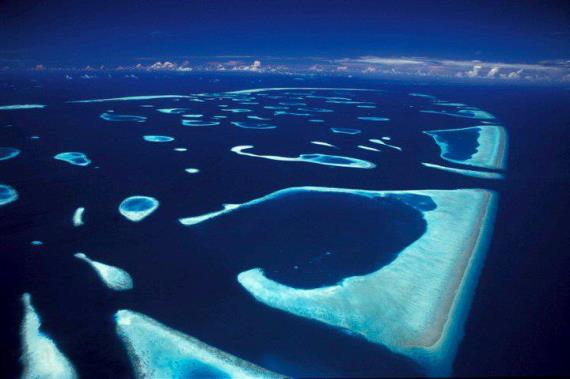
According to a new paper published in Geo-Physical Letters, there is evidence that coral islands may thrive during times of rising sea levels.
Low-lying islands, those laying below 3 meters (9.84 ft), are at a high risk of flooding due to rising sea levels associated with climate change. However, this new research from Northumbria University in England has found evidence that the Maldives formed when the sea levels were much higher than current sea levels.
Researchers studying the formation of five of the islands were able to come to this conclusion by taking core samples of the islands. In doing so the researchers were able to reconstruct a model of how the islands formed over time. Using the samples the researchers discovered that the formation of the islands was a direct result of large waves off the coast of South Africa. These large waves, also known as “high-energy wave events”, broke fragments off of existing reefs allowing the ocean currents to transplant these fragments to where the Maldives are today.
At the time of the islands formation the sea levels are believed to have been .5 meters (1.6 ft) higher than they are today. The higher sea levels are proportional to the size of waves as well as the frequency of the high-energy wave events. Meaning that the high sea levels directly contributed to the formation of the Maldives. Researchers found that rising sea levels due to global warming would benefit and lead to a growth in reef islands. However, this would only occur if the coral reefs remain healthy, as only healthy reefs will be capable of producing the fragments needed to grow the reef.
The research was led by Dr. Holly East of Northumbria University. She explained, “Coral reef islands are typically believed to be highly vulnerable to rising sea levels. This is a major concern for coral reef island nations, in which reef islands provide the only habitable land.
However, we have found evidence that the Maldivian rim reef islands actually formed under higher sea levels than we have at present. This gives us some optimism that if climate change causes rising sea levels and increases in the magnitude of high-energy wave events in the region, it may actually create the perfect conditions to reactivate the processes that built the reef islands in the first place, rather than drowning them.”
Dr. East makes it very clear that this will only be possible and can only occur if healthy and live coral are available close by.
“As these islands are mostly made from coral, a healthy coral reef is vital to provide the materials for island building,” she said. “However, this could be problematic as corals face a range of threats under climate change, including increasing sea surface temperatures and ocean acidity. If the reef is unhealthy, we could end up with the perfect building conditions but not the bricks.”
While coral reefs may adapt or even benefit from rising sea levels the same cannot be said for the terrestrial life on the islands. The same high-energy wave events that will build the reefs will destroy the infrastructure on these islands. This will force the inhabitants to either build wave resistant facilities or to abandon the islands all together.





